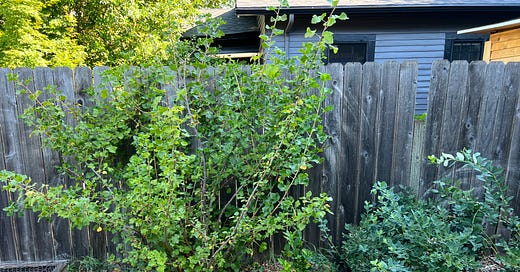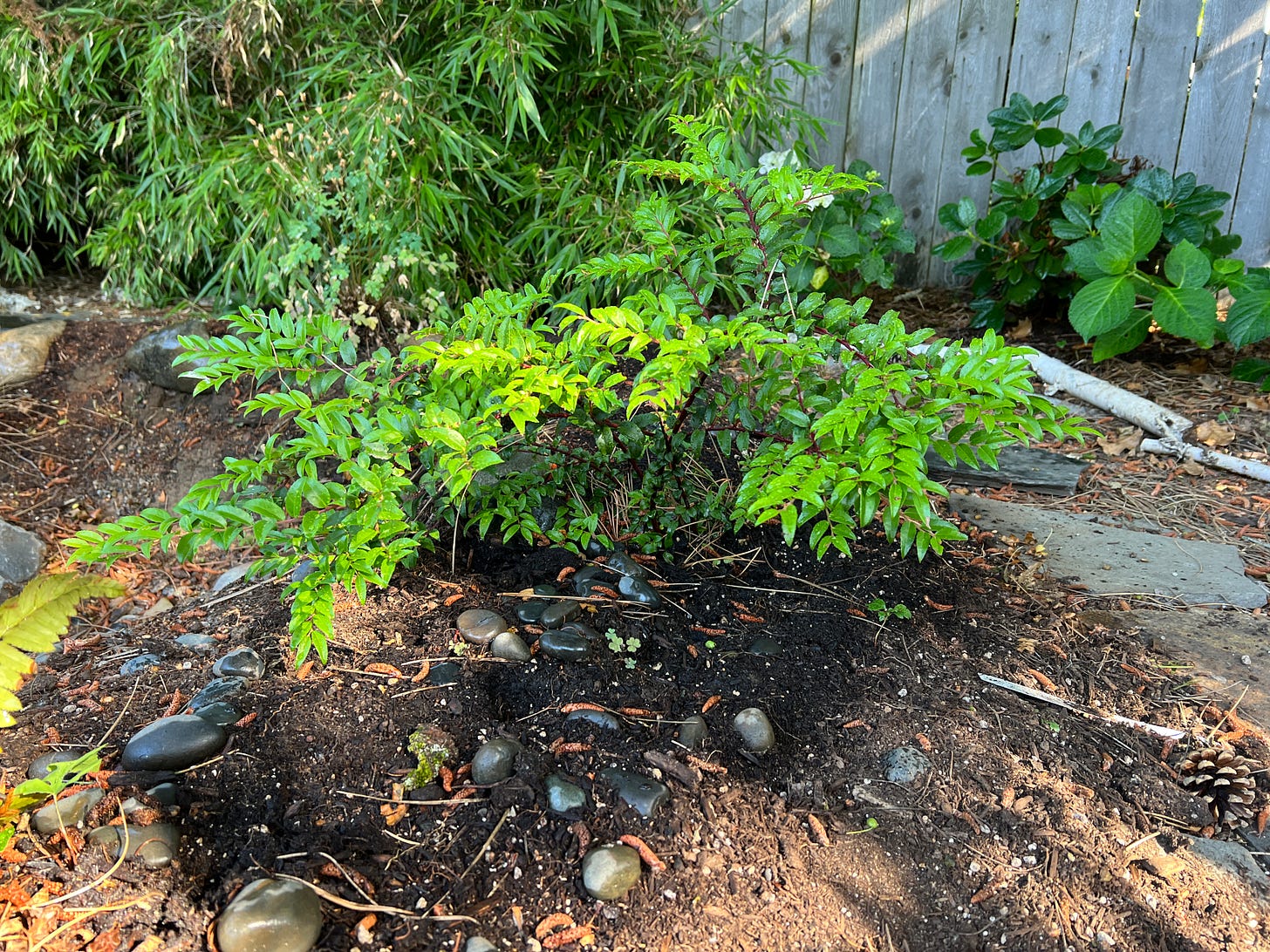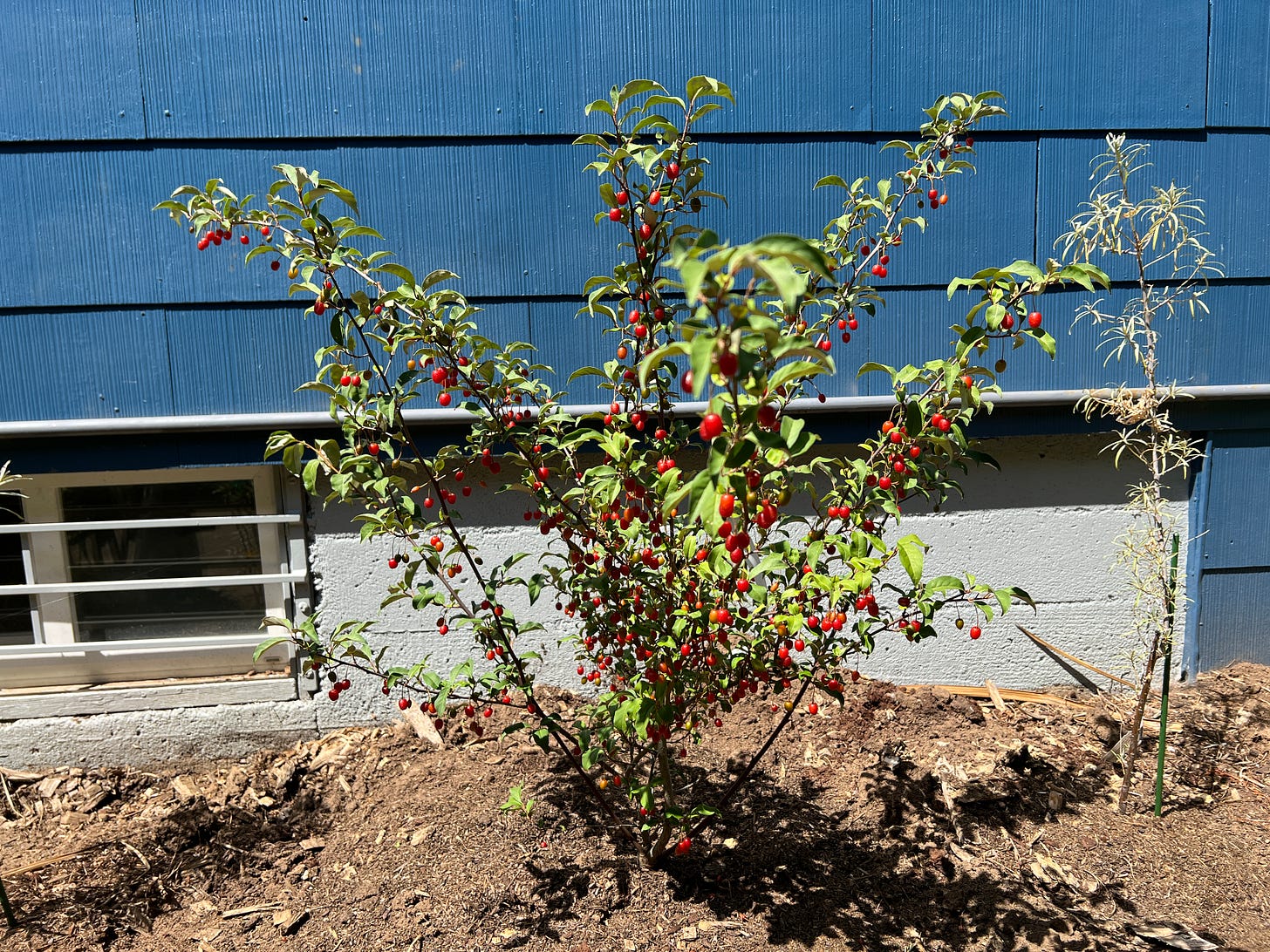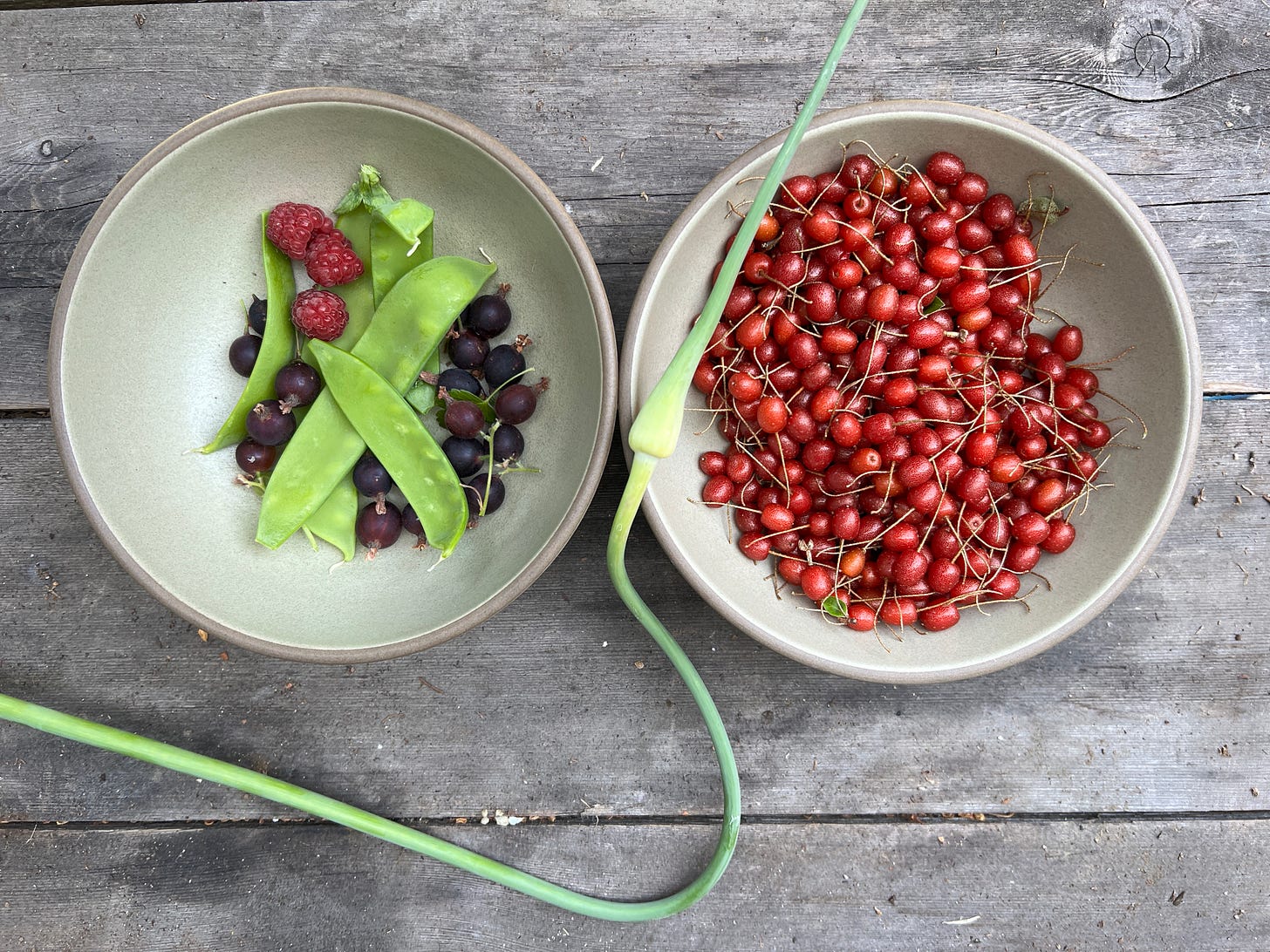I have a favor to ask of you: Would you be willing to recommend A Place Is a Gift to a friend by forwarding this email on? This newsletter will always be free, but in order to build on the writing I’m doing here, I’d love to double my readership. Thanks!
Three years ago, when Christian and I were beginning to grow our front-yard garden, we went looking for blueberry bushes and ended up with a jostaberry plant as well. What's a jostaberry, you ask? We had no idea either, which did not stop us from sticking one in the ground. (The correct answer: a three-way cross between one black currant and two gooseberry species.)
It took another two years to figure out what a jostaberry tastes like, because our jostaberry plant has grown into a cacophony of six-foot-high branches, which the crows surveil for fruit more closely than we do.
Tari Gunstone, the garden designer guiding the transformation of our front lawn, suggested a few more spots where we could plant berry bushes, including some native Northwest species we had never heard of. Her garden plan inspired Christian to plant even more varieties around the back yard. By last fall, our berry acquisition strategy had turned into a random spree, and we replaced a few shrubs along the south side of the house with even more berries.
In some ways, the berry planting has been a show of respect for the Willamette Valley’s spectacular berry-growing powers. The Indigenous Pacific Northwesterners who tended and shaped these lands for millennia cultivated large huckleberry groves, using traditional practices that some tribes are finally able to resume. Strawberries, raspberries, blackberries, and blueberries also play a large role in Oregon’s agriculture industry. As the strawberry episode of OPB's "Superabundant" video series explained, berries thrive here in part because our long, cool, rainy springs allow the fruit to grow slowly, flavor molecules aggregating all the while.
Christian and I also wanted to fill the yard with edible perennials that nature would take care of for us. Then we got caught up in the joy of pursuing, in Tamara Shopsin's words, an arbitrary stupid goal. The concept, which I learned about from Rochelle Greayer's newsletter Pith + Vigor, is that you don't always need to keep your focus on a grand master plan. Sometimes, it’s more enjoyable to invent a ridiculous goal and push yourself to absurd lengths to achieve it.
Planting a few bushes is a task. Planting 30 of them is a story. A saga, even. I've started calling our house the Kauffman-Rummell Library of Lesser-Known Berries (well, if you want to get technical, berries and drupes). It now contains so many specimens that Christian has created a spreadsheet to track them. An incomplete list:
Blueberries
Strawberries (native woodland and cultivated)
Jostaberries
Raspberries (red and black)
Salal berries
Oregon grapes
Salmonberries
Honeyberries
Evergreen huckleberries
Goumi berries
Sea berries (aka sea buckthorn)
That doesn't include the other berry-esque fruits we are cultivating, like Chilean guavas, blood limes, and ground cherries. And it emphatically excludes a Himalayan blackberry vine that keeps making incursions into our yard.
All the bushes are so small right now that we can't yet cook the fruit we harvest. This year, I think we picked four tiny honeyberries, and we have no idea how the evergreen huckleberries, sea berries, or salal berries will taste. At this point we grab anything that looks ripe to snack on—a flash of red, a blooming tartness in the mouth. Our jostaberry is still the biggest producer, but we can only gather a quarter-cup at a time. We’ve been tossing them into a pint container in the freezer until we have enough to bake into a mixed-berry cake.
For the moment, the Kauffman-Rummell Library of Lesser-Known Berries is still a source of private curiosity. Perhaps in another few years, there will be enough to share. This summer, we almost got there, thanks to an unexpected arrival. Our first goumi berry bush didn't survive the winter. When Christian went to the nursery for a replacement, he purchased a bush with almost-ripe fruit. The week after we transplanted it, all the jellybean-sized goumi berries turned bright red, freckled with pearlescent yellow spots, as if they had been showered in gold dust. The flavor is a mashup of red currants, strawberries, and cherry tomatoes.
Each goumi berry stays attached to its stem and contains an astringent pip, making goumis hard to eat by the fistful. After we gathered 2 cups, Christian found an online recipe for a goumi berry syrup that he wanted to try. We boiled the berries down into bright-red mush, passed the puree through a sieve to remove stems and seeds, and heated it again with sugar to taste. Yield: three-fourths of a cup.
We've tried making goumi berry cocktails by stirring the syrup into vodka or gin. Tiny test drink after tiny test drink, we've finally come up with a combination that we enjoy: a few tablespoons of goumi syrup, 1.5 ounces of gin, a splash of Campari, and some sparkling water for fizz. Sometimes we muddle a little mint or Thai basil in the glass, too. But, with only a few tablespoons of goumi syrup left, it has become apparent that our first unusual-berry harvest is not ready to leave the library's closed stacks. Perhaps, in 2024, there will be enough goumis for the public to taste.









I should send you a copy of my book Berries: A Global History — you definitely need to add a haskap to the menagerie!
Ha! Awesome! First, I love "arbitrary stupid goal". I think I have a lot of those. LOL! Second, this is how I feel about everything I plant...that I cannot get enough to make anything substantial. I took half of my basil plant to make pesto and it only made about a 1/4 cup. Sigh. I guess I will get another 1/4 cup from the second half? Ha!
When you start really producing berries, you can sell tickets to visit your library! xo